Hajaari (हजारी) - Watering Can
 |
| Watering can (हजारी) -Hajaari |
It is a type of
watering can that is used to put water for the vegetables and flowers of the
garden. The capacity of this can ranges from 10-20 liters but not limited. The tout
of the nozzle consists of dotted holes from which a spreading fountain of water
can be poured.
Guleli (गुलेली) - Catapult
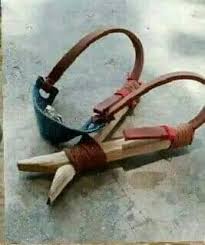 |
| Catapult - (गुलेली) |
It is a bifurcated wooden
tool to hit a prey. It consists of a handle to grasp by one fist and a rubber
belt with a central sling to hold pelts for hitting a target. Rural bird
hunters can effectively use it to kill birds in tens of yards away.
Dhungri (ढुङ्ग्री) - kitchen pipe
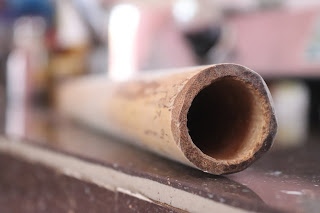 |
| Dhungri (ढुङ्ग्री) - Kitchen Pipe |
It is a type of kitchen
winding pipe usually made up of bamboo or less commonly iron metals. If fire is
dying then breath is blown from this pipe to rekindle the embers. This dhungri
is essential for traditional hearth and bhuse chuli (a metal hearth fueled by
wooden powder). With the arrival of kerosene and gas stove, the practice of
dhungri whistling has been disappearing.
Naanglo (नाङ्लो) -
 |
| Nanglo (नाङ्लो) |
It is a round bamboo
wicker material used to separate wastes and husks from the grains.
Dhakki (ढक्की)
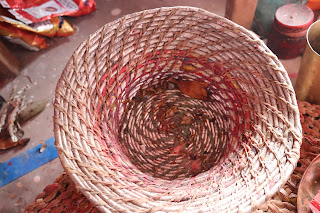 |
| Dhakki (ढक्की) |
It is also a homemade
flower holder which commonly finds its utility in the worshipping room. Flowers
are stored in a dhakki before it is offered to the idols.
Chalni (चाल्नी वा चाल्नु )- sieve
 |
| Chalni (चाल्नी वा चाल्नु )- bamboo sieve |
This is a round bamboo wicker
just like naanglo bu the difference is the bamboo shafts are separated so as to
form a meshwork of holes.
Daalo (डालो)
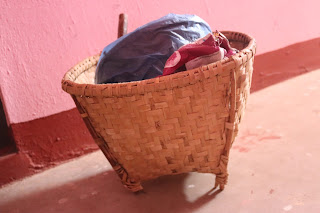 |
| Daalo (डालो) |
Daalo is a four-sided traditional
bamboo wicker with deeper dimensions. It is used to store crops for short
period.
Dhupauro (धुपौरो)
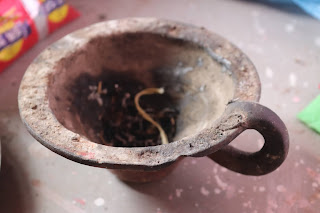 |
| Dhupauro (धुपौरो) |
It is a clay pot for offering
incense. First of embers are kept in it and incenses are offered in the fire
especially during worship. After the yoghurt is churned to make Mahi, a butter
is produced. This butter is also presented in the fire in dhupauro as a process
of sanctification and god offering.
Ghum (घुम)
 |
| Ghum (घुम) |
It is a traditional
Nepali raincoat essential while paddy planting because in the rainy season
neither of the sheltering material works. It is strewn with bamboo shafts and
saal ko paat with a plastic covering. Since it is rigid and is worn on the
back, farmers can use both the hands free.
Tasala (तसला)
 |
| Tasala (तसला) or Kasaudi |
It is a traditional Nepali
household utensil to cook rice. Even nowadays, this utensil is mandatory to
cook rice when Hindu sons observe holy quarantine after their fathers die. It
is made up of bronze or brass.
Perungo (पेरुङ्गो)
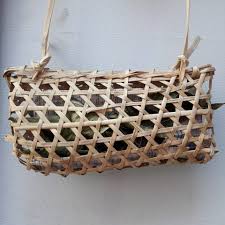 |
| Perungo (पेरुङ्गो) |
It is a bamboo strewn
material to hold stuffs to transport them for a day or two. Generally, hens are
transported to the market for sales in perunggo.
Mukhauro (मुखौरो )
 |
| Mukhauro (मुखौरो ) |
It is also a bamboo
strewn tool to cover the mouth of livestock like goat, oxen or cow that
prevents them from grazing when making them walk or while plowing the field. In the picture above, you can see a basket bag that has covered the mouth of both oxen.
Thaili (थैली)
 |
| Thaili (थैली) |
It is a traditional
Nepali money bag used by older Nepali women for keeping money in. Nowadays, it
is also used as a gift material for the foreigners and finds its greater use as
a fashion materials. Thaili used to be the integral part of traditional Nepali costume and were made up of Dhaka or Makhamali clothes.
Theki and Madani
(ठेकी र मदानी
)
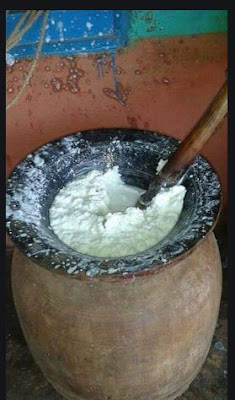 |
| Theki and Madani (ठेकी र मदानी ) |
A pair of wooden tools to churn the curd in order to make mahi is called Theki and Madani. Theki is a large deodar curd holder in which curd is stirred by madani, the small wooden stick with multiple studs at one end.
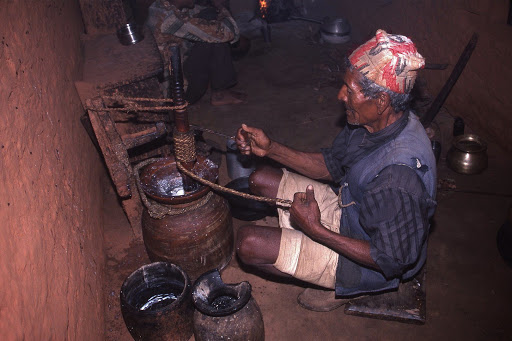 |
| Picture Courtesy: The Gundruk Post |
Doko and namlo (डोको र नाम्लो)
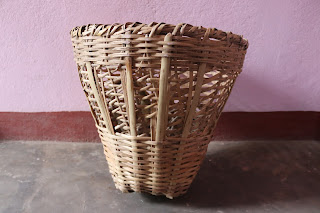 |
| Doko (डोको) |
 |
| namlo (नाम्लो) |
A pair of basket and a
rope used in farming and animal husbandry is called Doko and Namlo. Doko is a
bamboo-made material to collect, transport and store grass and fodder for
livestock. Namlo is a rope to carry Doko. Doko is carried on tha back while
namblo is worn on the head.
Karuwa (करुवा)
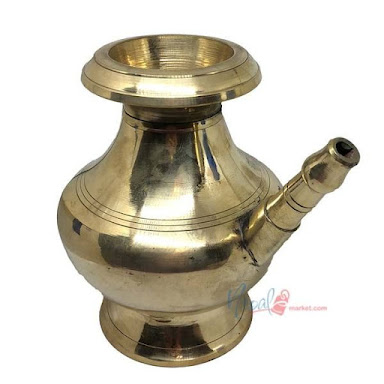 |
| Karuwa करुवा |
It is a type of pitcher
used to hold water for two purposes: 1) for offering jal to the deities before
starting the worship or water is stored for divine activities 2) for drinking
water without touching parts of mouth. So only the respected guests and seniors
are allowed to drink water from karuwa. Karuwa is made up of a bit expensive
metal alloy that we call Dhallot.
Amkhora or Ankhora (अंखोरा)
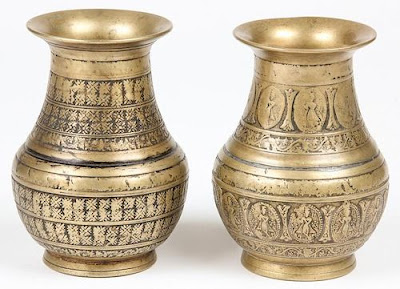 |
| Aesthetic Amkhora or Ankhora अंखोरा |
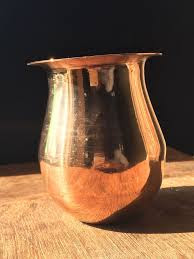 |
| General purpose Amkhora or Ankhora अंखोरा |
It is also water
pitcher used to hold water for general human drinking without touching mouth
parts. Amkhora is used for water drinking while dining because Karuwa is
thought to be holy utensil so we can't touch it while eating. Generally
children are not allowed to drink from Amkhora. Aesthetic amkhoras are used for
beautifying home interior and worship room because they look beautiful with the
artistic engravings and yellow metallic luster. General purpose amkhoras are
common kitchenware.
Lohota (लोहोटा लोटा)
 |
| Lohota or Lota लोहोटा लोटा |
Lohota or simply Lota
is another type of pitcher for storing water. These utensils are used in trivial
and less respectful activities. Lohota is used to pour water while dishwashing
or to take water while going to the latrines. They are generally kept outside
home or around washing sink.
Tapari (टपरी) = Leaf plate
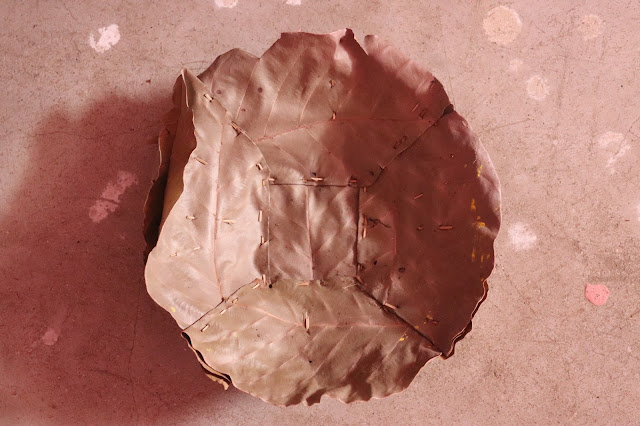 |
| Dried Tapari (टपरी ): Leaf plate |
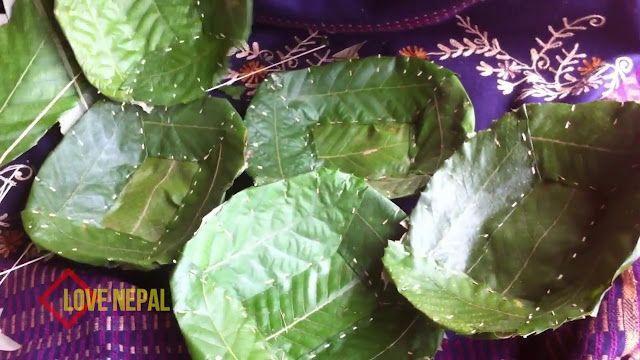 |
| Fresh Tapari टपरी Leaf plate |
It is a traditional
green plate made up of the leaves of Shorea robusta (sal) plant. They find
their uses, nowadays, only in holy functions of Hinduism like nwaran, shraddha,
jaladan, barakhi, saptaha, rudri, etc. Devotees put rice, paddy and fruits in
Tapari. It is made by knitting the green leaves of shorea robusta by small
bamboo sinka (sticks). Many years ago, in wedding ceremony, foods were served
in Tapari. But these days, this type of tradition is completely disappeared.
Duna (दुना) = Leaf Bowl
 |
| Duna (दुना) = Leaf Bowl |
Duna is the bowl made
up of natural leaves of Shorea robusta (sal ko pat). While tapari is a round
and slightly notched leaf plate that needs 8-12 leaf foils Duna only needs two
leaf foils. Liquid or jal, prasad, janai supari and dakshina is put in duna.
Bohota (बोहोता)
 |
| Bohota (बोहोता) |
Bohota is also a big
sized bowl made by the Shorea robusta leaves and is used in holy functions. They
are equally used in Newari Bhoj.




0 Comments